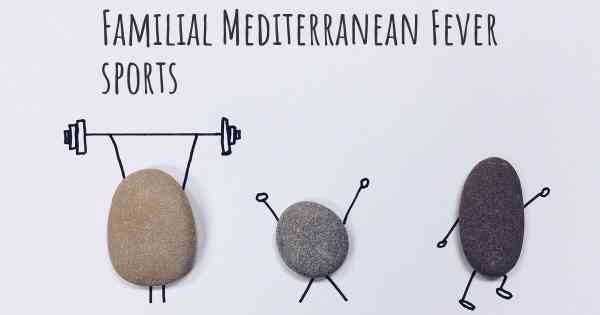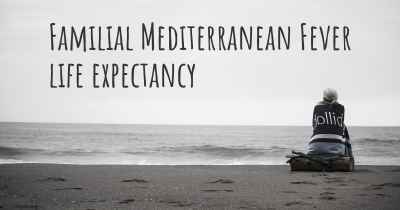Is it advisable to do exercise when affected by Familial Mediterranean Fever? Which activities would you suggest and how intense should they be?
See if it is advisable for people with Familial Mediterranean Fever to practice sports and which ones are the most recommended if you have Familial Mediterranean Fever

Familial Mediterranean Fever (FMF) is a genetic disorder characterized by recurrent episodes of fever and inflammation in various parts of the body. It is important to note that exercise can have both positive and negative effects on individuals affected by FMF. While exercise is generally beneficial for overall health and well-being, it is crucial to approach it with caution and adapt it to the specific needs and limitations of each individual.
Benefits of Exercise for FMF:
Engaging in regular exercise can provide several benefits for individuals with FMF:
- Improved cardiovascular health: Exercise helps strengthen the heart and improve blood circulation, reducing the risk of cardiovascular complications often associated with FMF.
- Enhanced joint mobility: Certain exercises can help improve joint flexibility and reduce the risk of joint stiffness and pain, which are common symptoms of FMF.
- Weight management: Regular physical activity can assist in maintaining a healthy weight, which is important for managing FMF symptoms and overall health.
- Mood elevation: Exercise releases endorphins, which can help improve mood and reduce stress levels, contributing to better overall mental well-being.
Choosing the Right Activities:
When selecting exercises for individuals with FMF, it is crucial to consider their specific symptoms, limitations, and overall health condition. Here are some recommended activities:
- Aerobic exercises: Low-impact activities such as walking, swimming, or cycling are generally well-tolerated by individuals with FMF. These exercises provide cardiovascular benefits without putting excessive strain on the joints.
- Stretching and flexibility exercises: Gentle stretching exercises, yoga, or tai chi can help improve joint mobility and reduce muscle stiffness, which are common symptoms of FMF.
- Strength training: Light resistance exercises using resistance bands or light weights can help improve muscle strength and support joint stability. It is important to start with low resistance and gradually increase as tolerated.
- Balance and coordination exercises: Activities such as Pilates or specific balance exercises can help improve stability and reduce the risk of falls, which can be a concern for individuals with FMF.
Exercise Intensity and Duration:
The intensity and duration of exercise should be tailored to the individual's capabilities and tolerance. It is recommended to start with shorter durations and lower intensities, gradually increasing them over time. Here are some general guidelines:
- Low to moderate intensity: Aim for exercises that elevate the heart rate slightly without causing excessive fatigue or breathlessness. This can be achieved through activities such as brisk walking or water aerobics.
- Start with shorter durations: Begin with 10-15 minutes of exercise and gradually increase the duration to 30 minutes or more, depending on individual tolerance.
- Listen to your body: Pay attention to any signs of excessive fatigue, pain, or discomfort during and after exercise. It is important to rest and modify the intensity or duration if needed.
Precautions and Considerations:
While exercise can be beneficial for individuals with FMF, it is essential to take certain precautions:
- Consult with a healthcare professional: Before starting any exercise program, it is advisable to consult with a healthcare professional familiar with FMF to ensure it is safe and appropriate for your specific condition.
- Stay hydrated: Drink plenty of water before, during, and after exercise to prevent dehydration, which can trigger FMF symptoms.
- Modify activities during flare-ups: During FMF flare-ups or episodes, it may be necessary to modify or temporarily avoid certain exercises to prevent exacerbation of symptoms. Rest and gentle stretching may be more appropriate during these times.
- Gradual progression: Avoid sudden increases in exercise intensity or duration, as it may lead to excessive fatigue or joint pain. Gradual progression allows the body to adapt and minimize the risk of flare-ups.
Conclusion:
Exercise can be beneficial for individuals affected by Familial Mediterranean Fever, providing improvements in cardiovascular health, joint mobility, weight management, and overall well-being. However, it is crucial to approach exercise with caution, choosing appropriate activities and adapting intensity and duration to individual capabilities and limitations. Consulting with a healthcare professional is highly recommended to ensure a safe and effective exercise program tailored to the specific needs of each individual.
Posted Mar 5, 2017 by Karen 1050
Posted Nov 23, 2021 by Lilit 100








